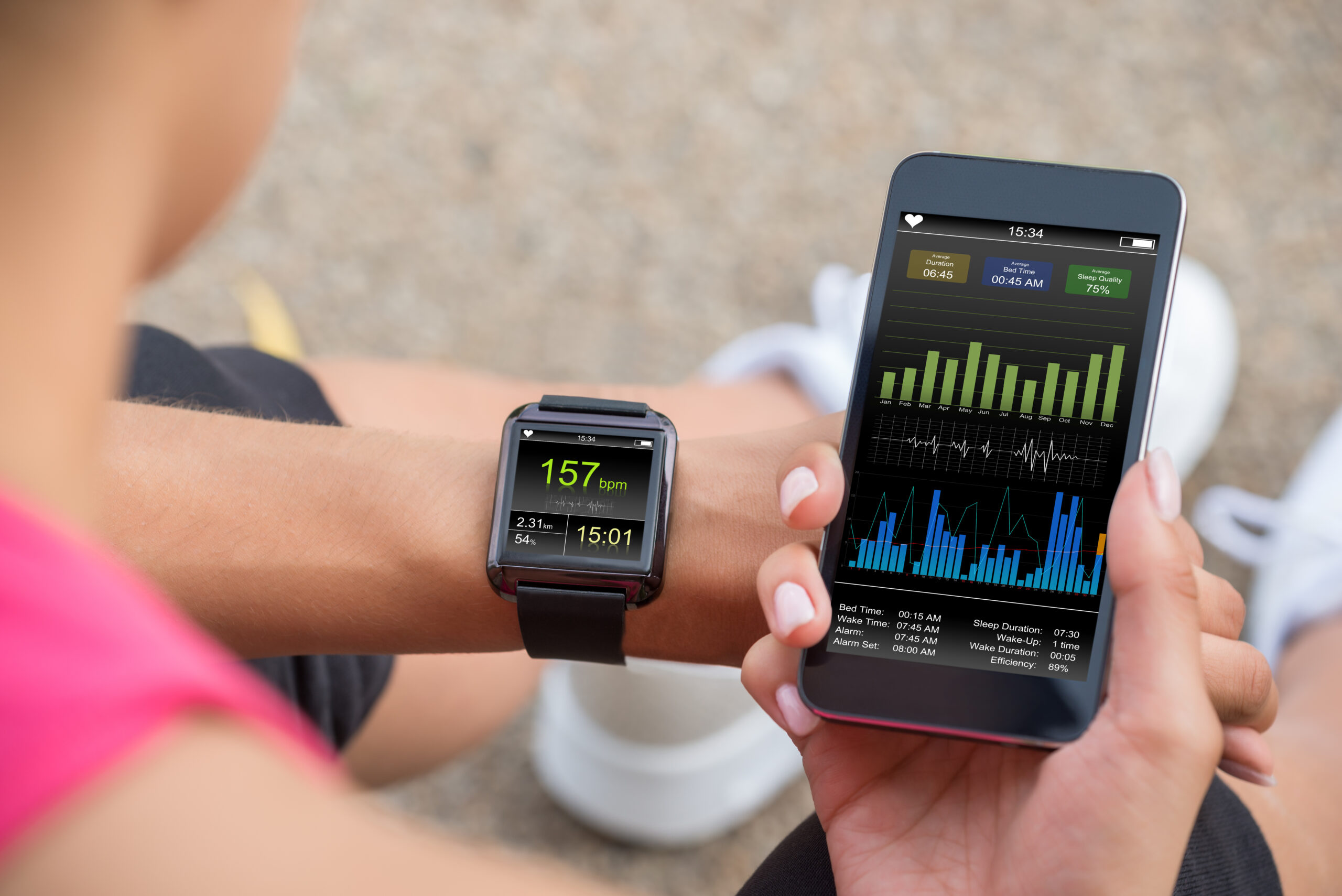How can personalized fitness help you achieve better health results? Why do generic diet and workout plans fail, and how does personalized fitness offer a better solution? What role does technology play in advancing personalized fitness and nutrition plans?
Health and wellness are not one-size-fits-all, and that’s why personalized fitness is transforming how we approach diet and exercise. Instead of following generic plans that may not suit your body’s needs, modern tools analyze factors like genetics, metabolism, and lifestyle to create customized strategies for better results. Whether through DNA testing, gut microbiome analysis, or AI-driven fitness apps, personalized fitness ensures your plan is tailored to what works best for you.
With advancements in wearable technology, AI-powered meal planning, and expert-guided fitness programs, personalized fitness is more accessible than ever. These innovations take into account stress levels, sleep quality, and physical activity habits to craft sustainable, effective health solutions. This blog dives into the science behind personalization, the latest tools in fitness and nutrition, and how you can leverage them to reach your goals efficiently and enjoyably.
Have you ever found a random diet or workout plan that promised great results but just didn’t work for you? That’s because health isn’t one-size-fits-all. The new, trendy diet or workout you saw on social media that worked for one person might not work for you at all.
Personalized fitness and nutrition plans are changing the health and wellness game, and as a data scientist, I find this tech particularly fascinating.
These tools work by making recommendations based on your unique biology, lifestyle, and goals to create a plan tailored to you that is more likely to give you your desired results. Unlike generic fitness and diet plans, personalized approaches use science and data to analyze factors like genetics and lifestyle to help you optimize your strategies.
This shift toward more personalized recommendations isn’t just a trend; it’s the future of health, helping people actually hit their goals and see a difference in their overall well-being. Let’s dive into the science behind personalization, the factors at play, and how emerging technologies are making it easier than ever to find long-term success in fitness and nutrition.
Table of Contents:
The Science Behind Personalization
Key Factors in Personalized Nutrition
Customized Exercise Strategies
- Tailoring Workouts to Individual Needs
- Recovery, Rest & Stress Management
- Strength, Cardio & Flexibility Training
- Adjusting Workouts for Age & Health Conditions
Technology & Tools for Personalization
- Wearables & Fitness Trackers
- AI-Driven Nutrition & Fitness Planning
- Expert Guidance from Dietitians & Trainers
Future Trends in Personalized Health
The Science Behind Personalization
Historically, dietitians and nutritionists have taken an individualized approach to creating fitness and nutrition plans. However, an abundance of data plays into your overall health, and it all needs to be considered to develop a personalized plan that works. For example, consider your environment. If you live in a food desert or don’t have access to a kitchen, your ability to cook certain meals or access certain foods, like fresh produce, will be limited. Similarly, if you live in an area without sidewalks, don’t have access to a gym, or live in a small space like an apartment, the types of exercises you can do can also be limited.
The science behind personalized health is vast and considers several other individual factors, including:
- Genetics & Metabolism
- Gut Health & Microbiome
- Lifestyle, Environment & Habits
1. Genetics & Metabolism
Your genetic makeup plays a major role in how your body processes food and responds to exercise. You’ve probably heard people say they have a “slow metabolism,” which is a genetic predisposition. On the other hand, some people may have a faster metabolism and naturally burn energy more efficiently. DNA testing like Nutrigenomics can provide insights into how your body responds to different macronutrients. For example, some people may thrive best with a high-fat, low-carb diet, whereas it may be the opposite for someone else.
2. Gut Health & Microbiome
Your gut microbiome—the trillions of bacteria in your digestive system—significantly impacts your health. Research even shows your gut microbiome is linked to your mental health. Gut health also influences how well your body absorbs nutrients, meaning—again—that the same diet can affect everyone differently. This is why personalized nutrition plans are so helpful. These plans can even be developed with microbiome testing to ensure you’re getting the absolute best foods possible based on what your body needs.
3. Lifestyle, Environment & Habits
Beyond your genetic makeup and environment, several other factors, such as your lifestyle and habits, determine what plans work best for you. Factors like stress levels, sleep quality, your work schedule, and physical activity all affect how your body processes food and responds to exercise and other health changes. The technology that creates personalized fitness and diet plans can be programmed to take these variables into account.
Key Factors in Personalized Nutrition
Because everyone’s body is so different, nutrition is extremely personal. For example, athletes may require higher protein intake for muscle repair, whereas if you’re a person with insulin resistance, protein might not be your main focus. Instead, you’re looking for a low-carb diet. Similarly, micronutrients—like vitamins and minerals—are also important to proper nutrition but impact everyone differently. Some people have low iron or anemia and need more, whereas others may just need the recommended amount.
Beyond the nutrients in the food itself, there are many other factors to consider with nutrition, including dietary intolerances and allergies, blood sugar regulation, and even meal timing routines, such as intermittent fasting. For example, data from the Cleveland Clinic found that about 6% of the U.S. population is gluten intolerant. While 6% may not seem like a considerable statistic, that equals about 20 million people, which is very significant. Moreover, this is just one example of why health and nutrition can’t take a one-size-fits-all approach.
Customized Exercise Strategies
Nutrition isn’t the only important aspect of health and wellness that matters. Exercise is an equally important element, and personalized fitness strategies are emerging as a go-to option for those who want to get the absolute most out of their workout time, and it has great benefits.
- Tailoring Workouts to Individual Needs
- Recovery, Rest & Stress Management
- Strength, Cardio & Flexibility Training
- Adjusting Workouts for Age & Health Conditions
1. Tailoring Workouts to Individual Needs
One-size-fits-all workout plans often fail because they don’t account for individual differences in each person’s fitness level, body composition, and personal goals. Beginners may need a different approach than a seasoned athlete would. Similarly, someone focusing on building muscle will need a different plan than someone training for endurance. Personalized fitness plans consider all these differences and more to create a strategy that maximizes results.
2. Recovery, Rest & Stress Management
Rest and recovery are just as important as the exercise itself. When you overtrain, you could experience fatigue that leads to injury or burnout. Personalized fitness plans take this into account, strategically incorporating rest days, sleep tracking, and stress management techniques to ensure your progress and overall well-being are as balanced as possible.
3. Strength, Cardio & Flexibility Training
There is a wide variety of exercise options and workout styles, each working better for different people. Some may respond exceptionally well to high-intensity interval training (HIIT) workouts, whereas others may need steadier cardio and strength training. With a personalized plan, you can combine all these elements based on what works best for your body to create the most effective and sustainable regimen.
4. Adjusting Workouts for Age & Health Conditions
There will be times throughout life when we need to change our approach to exercise. Whether it’s because we’re aging or healing from an injury or illness, our exercise needs can change several times. Instead of quitting physical activity altogether, we can revisit our strategies to improve our plans based on our new needs to stay active safely. Personalized fitness is the key to ensuring workouts are effective and adaptable for the long term.
Technology & Tools for Personalization
The use of digital fitness tools has skyrocketed in recent years, growing more than 30% since 2021, and it doesn’t seem to be slowing down any time soon. The revenue of fitness apps is expected to grow at a compound annual growth rate of 7.96% from 2024 to 2029. That means that by 2029, the estimated market size will be about $10.06 billion.
With the market being as large as it is, there’s no shortage of personalized fitness tools and technology options. Just a few general examples include:
- Wearables & Fitness Trackers
- AI-Driven Nutrition & Fitness Planning
- Expert Guidance from Dietitians & Trainers
1. Wearables & Fitness Trackers
Devices like the Fitbit, Apple Watch, and Oura Ring are all staples in the wearable fitness market. This tech can track your heart rate, sleep quality, activity levels, and workout performance, providing real-time data that helps you fine-tune your exercise and nutrition plans. Wearable tech like this allows you to monitor your progress and adjust your routines as needed or based on your body’s feedback.
One of the best parts of these trackers is their ability to collect and store data over time. For example, if you’re working on improving your sleep, you can review your sleep data each night over a set amount of time to see how well you’re doing and where or how you could make improvements to meet your goals.
2. AI-Driven Nutrition & Fitness Planning
Like most industries, AI is also revolutionizing health and fitness. AI-powered fitness and nutrition apps offer customized recommendations based on user data. Apps like MyFitnessPal, Noom, Gyroscope, JEFIT, Mirror, and several others are all staples; it’s like having a personal fitness coach right in your pocket. They all have different capabilities and use cases, but generally, they can analyze your dietary habits and activity levels to suggest optimal food choices and workouts. AI-driven meal planning services can even consider your food preferences and allergies to create highly personalized diets.
It can do the same with personalized fitness plans, as well. These apps consider your fitness goals, body composition, physical limitations, and workout preferences, ensuring they craft an enjoyable, customized workout plan that fits your goals, needs, and interests. Moreover, these apps can track your workout stats over time, such as your heart rate and exercise consistency, tracking how many workouts you do each week or month—even tracking the time of day you’re most likely to exercise—to send you notifications and recommendations whenever relevant.
3. Expert Guidance from Dietitians & Trainers
Technology is an extremely powerful tool in personalized fitness and nutrition planning, but professional guidance is still an essential resource. One of the most effective strategies is to take a hybrid approach, combining technology with expert guidance from dietitians and trainers. They can interpret health data from your apps and wearable trackers to provide personalized recommendations that align with your specific goals while keeping a watchful eye on your progress and efficiency.
Future Trends in Personalized Health
The health industry as a whole—from healthcare to fitness and nutrition—is constantly evolving, particularly as technology continues to advance.
DNA testing is becoming more sophisticated, allowing for even more personalization across all aspects of one’s health. Imagine being so in tune with your genetic makeup that you can receive highly specific dietary and fitness recommendations based on what your genes dictate is best for you.
As AI continues to evolve, the apps and wearable trackers we’re familiar with will continue improving, becoming even more detailed and dynamic. In the future, more advanced algorithms could integrate real-time biometric data, even including your emotional state, to provide more holistic, personalized health solutions that truly feel like they were made for you.
Data is vital to health. As more people begin tracking their health data, whether it be their nutrient intake, sleep, or workouts, the potential for more hyper-personalized interventions increases. Imagine all your tech working together—your wearable trackers, smart home devices, and digital health platforms and apps—to create an incredibly individualized approach to fitness and nutrition. This is the future of health and wellness, and with the help of technology, we could see people begin living longer, healthier, happier lives.
Conclusion
Personalized fitness and nutrition recommendations from advanced tools and technology, such as AI-powered apps and wearable trackers, are revolutionizing how we approach our overall health and wellness.
When we dig deeper and consider genetics, overall health, lifestyle, habits, environment, and general preferences, we open the door to more personalized, effective, and sustainable health plans.
As technology, AI, and the way we collect and analyze data continue developing, this customization will become more accessible than ever, ensuring everyone can unlock their own unique path to improved health and greater wellness.









2 Responses
Whoa! This blog looks exactly like my old one! It’s on a completely different subject but
it has pretty much the same layout and design. Excellent
choice of colors!
Terrific article! This is the type of information that are meant to be shared across the web.
Disgrace on the seek engines for now not positioning this submit higher!
Come on over and discuss with my site . Thanks =)